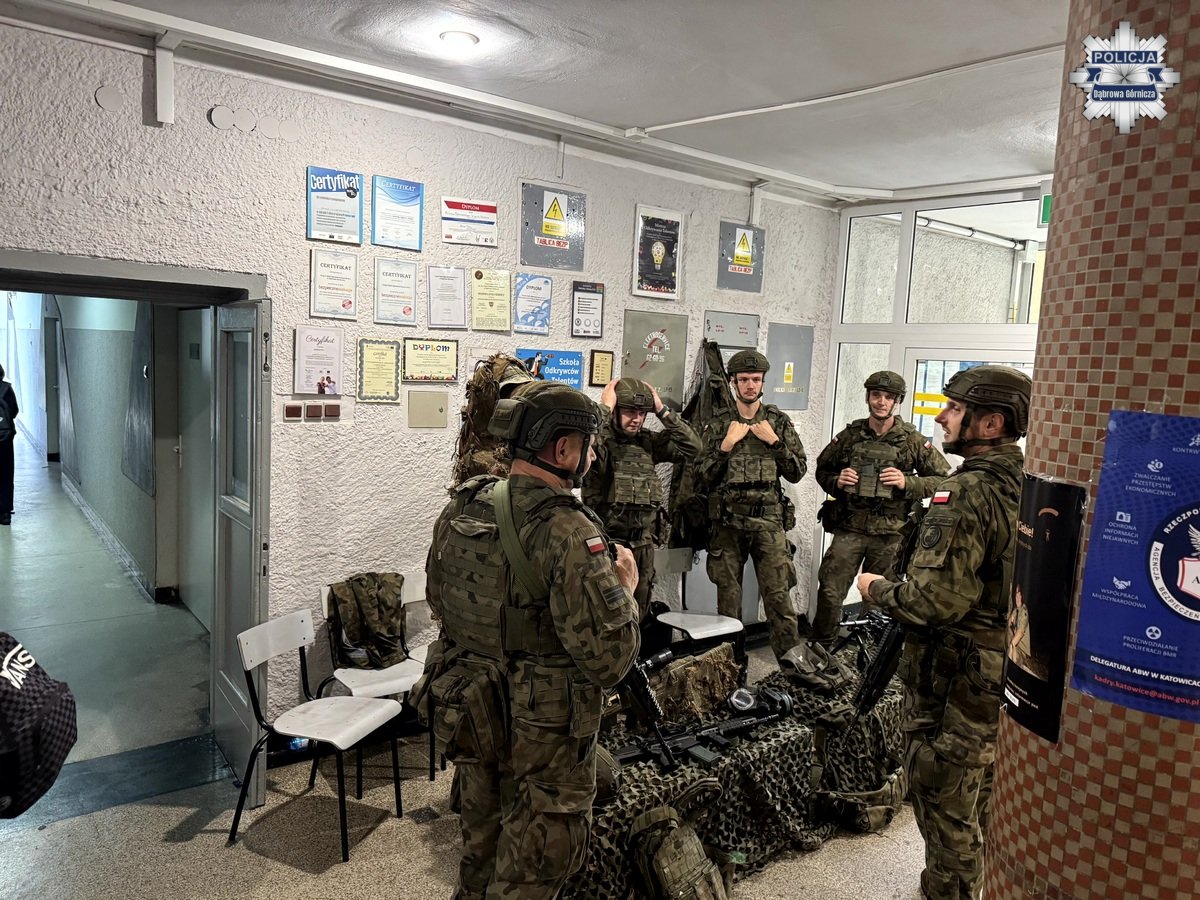
Во всех человеческих изобретениях мало кто внушает столько страха, очарования и неловких разговоров, как туалет самолета. Этот крошечный синий вихрь шума и всасывания, который заставляет пассажиров задаваться вопросом, будут ли они выброшены в стратосферу, имеет таинственный способ впечатляюще и коллективно потерпеть неудачу.
Просто спросите любого пассажира на последних рейсах Air India (AI), где проблемы с туалетом превратили международные поездки в неожиданные объезды. Это такая ситуация, когда вы понимаете, что значит «застрять в глубоком ду-ду» на высоте 35 000 футов!
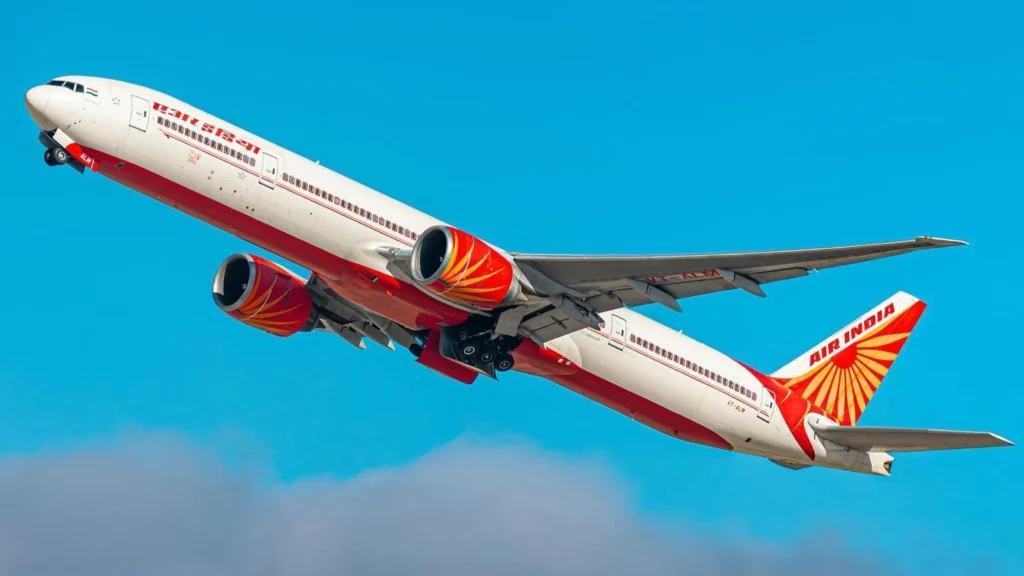 Фото: Cado Handerson
Фото: Cado HandersonНедавние инциденты
Засоренные туалеты нарушили два международных рейса Air India всего за два месяца. Это привлекло неудобное внимание к туалетным операциям самолетов.
Все туалеты, кроме одного на Boeing 777, летевшего из Чикаго (ORD) в Дели (DEL), стали непригодными для использования в марте.
Совсем недавно, Не менее пяти туалетов забиты На другой B777, путешествующей из Торонто (YYZ) в Дели (DEL), требуется незапланированная диверсия во Франкфурт (FRA).
Типичный Boeing 777 оснащен 12 туалетов распространился по всему самолету. Остается вопрос: почему так много людей терпят неудачу одновременно? Ответ кроется не в каком-то космическом заговоре туалетов, а в фундаментальной физике систем управления авиационными отходами.
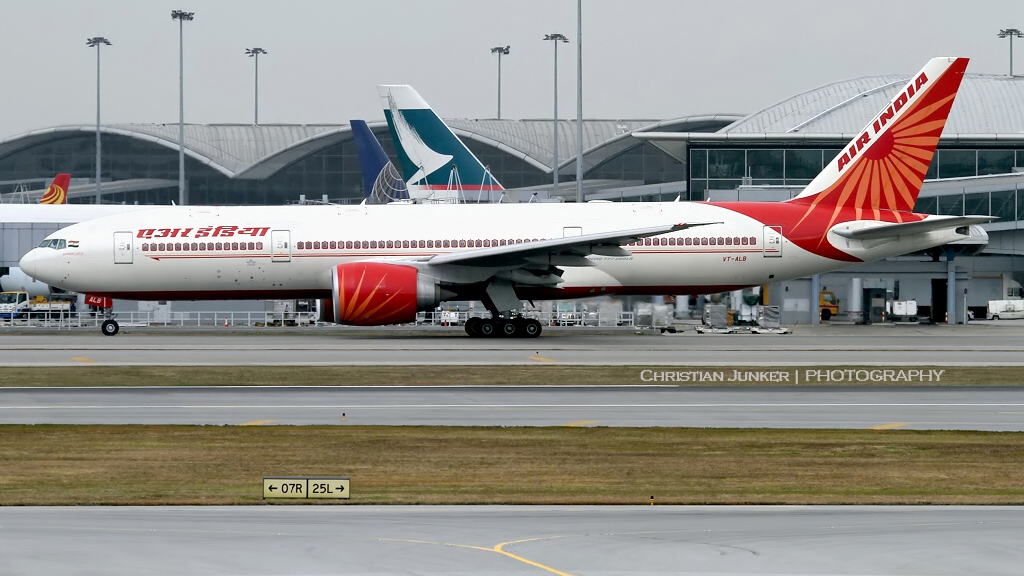 Фото: Кристиан Юнкер | Фотография | Flickr
Фото: Кристиан Юнкер | Фотография | FlickrКак работают авиационные туалеты
В отличие от домашнего туалета, который использует нежный толчок силы тяжести, туалеты для самолетов Использование системы дифференциального давленияПо сути, это мощный вакуум. Эта необходимость вытекает из требований по герметизации самолета, отмечает Hindustan Times.
На крейсерской высоте (обычно около 35 000 футов) давление воздуха за пределами самолета опасно низкое — около 3,45 фунтов на квадратный дюйм (пси) по сравнению с уровнем моря примерно 14,7 пси. Для безопасности и комфорта пассажиров давление в салоне поддерживается на уровне от 11 до 12 psi, что создает значительный перепад давления между салоном и внешней средой.
Использование дифференциального давления
Самолетные туалетные системы изобретательно используют эту разницу давления. Когда пассажир смывается, открывается клапан в нижней части туалетной чаши, подвергая содержимое этому дифференциалу давления.
Воздух более высокого давления из кабины устремляется в область более низкого давления, силой перевозя вместе с ним отходы. Это объясняет тот поразительный вздор, который заставляет летчиков задаваться вопросом, частично ли они всасываются в космическое пространство!
Важно отметить, что эти отходы не выбрасываются в атмосферу. Вместо этого, это направленный в резервуар для хранения Находится в негерметичной зоне самолета.
«Бак для отходов расположен под полом кабины самолета, в негерметичном районе», - объясняет Ашвани Шарма, ветеран-инженер по техническому обслуживанию самолетов, ранее работавший в Air India (AI), а в настоящее время профессор кафедры аэрокосмической инженерии Университета Чандигарх. "Этот танк, когда он заполнен, может обслуживаться всякий раз, когда самолет приземляется в аэропорту. "
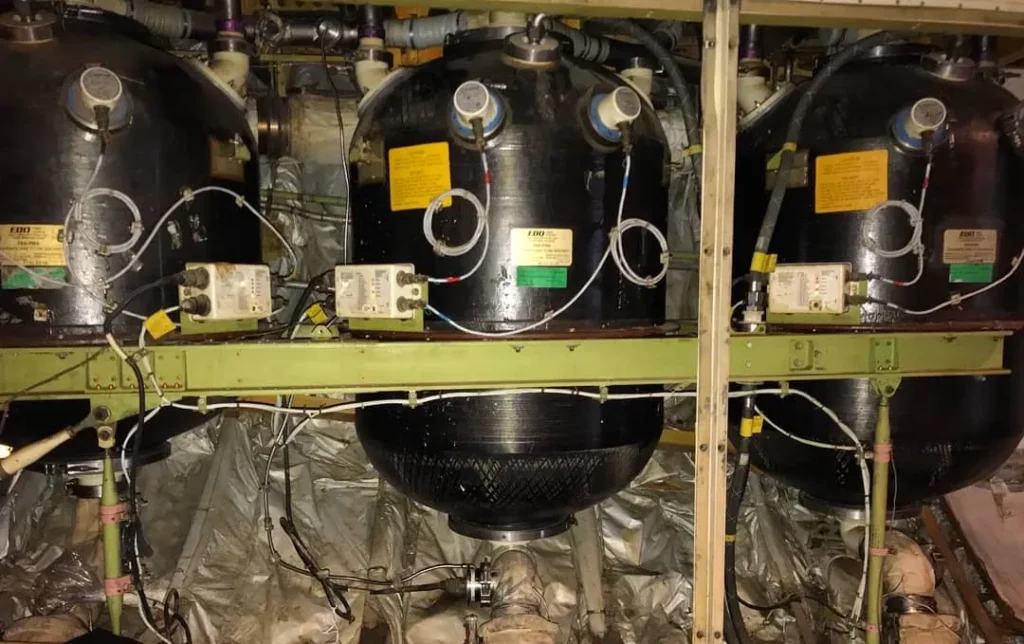 Отходы Boeing 777 Танки, фототехника (Facebook)
Отходы Boeing 777 Танки, фототехника (Facebook)Бортовой туалетный клог
Понимание почему Несколько туалетов засоряются одновременно требует знания архитектуры сантехники на борту самолета. Различные модели имеют различные конфигурации туалета и установки резервуаров для отходов.
Узкофюзеляжные однофюзеляжные самолеты, такие как Boeing 737 MAX и Airbus A320 NEO, обычно имеют один бак для отходов, в то время как широкофюзеляжные двухфюзеляжные самолеты имеют несколько танков.
"У Boeing 777 два танка, а у Airbus A350 четыре. Если есть два резервуара, то к каждому будет подключена половина туалетов. "
Ашвани Шарма, ветеран AME, Air India
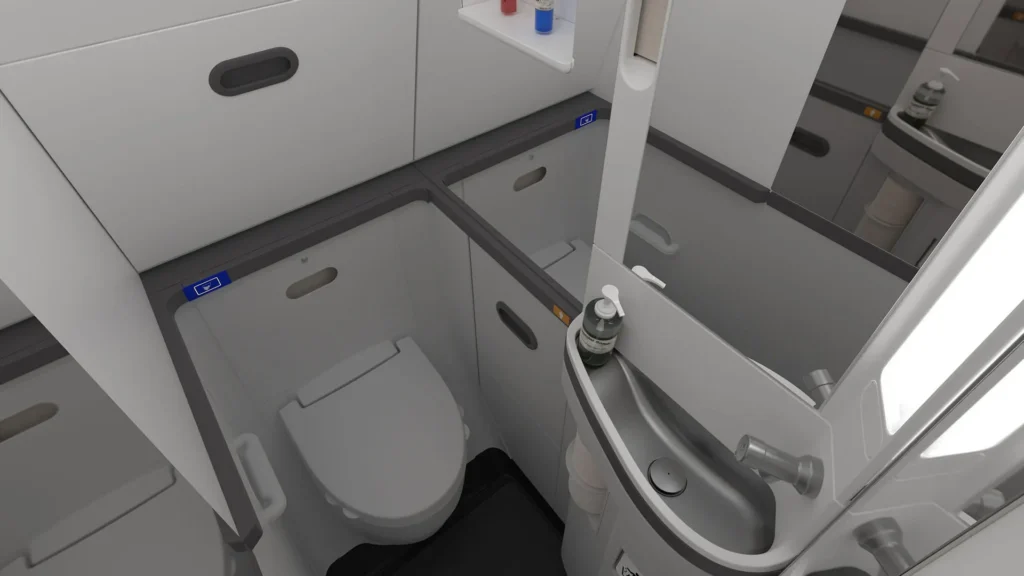 Boeing 737 Max Lavatory, фото Collins Aerospace
Boeing 737 Max Lavatory, фото Collins AerospaceТанковая сеть
Эта взаимосвязанная сеть объясняет отказ цепной реакции. Когда один туалет забит, это часто происходит из-за того, что пассажиры смывают неподходящие предметы — пластиковые бутылки, подгузники, полиэтиленовые пакеты или одежду. Расположение препятствия определяет степень проблемы.
«Если засорение находится в части дренажной линии рядом с резервуаром для отходов, то все туалеты, подключенные к этому конкретному резервуару, будут засорены, поскольку препятствие предотвращает создание дифференциального давления», - объясняет Шарма. "Если, однако, засорение находится в туалетной миске или в канализации, расположенной непосредственно под миской, то будет затронут только этот туалет. "
Размер имеет решающее значение в этих ситуациях. Некоторые предметы могут быть достаточно маленькими, чтобы пройти через отверстие в унитазе, но слишком большими, чтобы перемещаться по более узкой дренажной линии.
"Это может перекрыть канализацию. Как только происходит блокировка, дифференциальное давление не может быть создано, и все туалеты, подключенные к этому резервуару для отходов, становятся непригодными для использования. "
Ашвани Шарма, ветеран AME, Air India
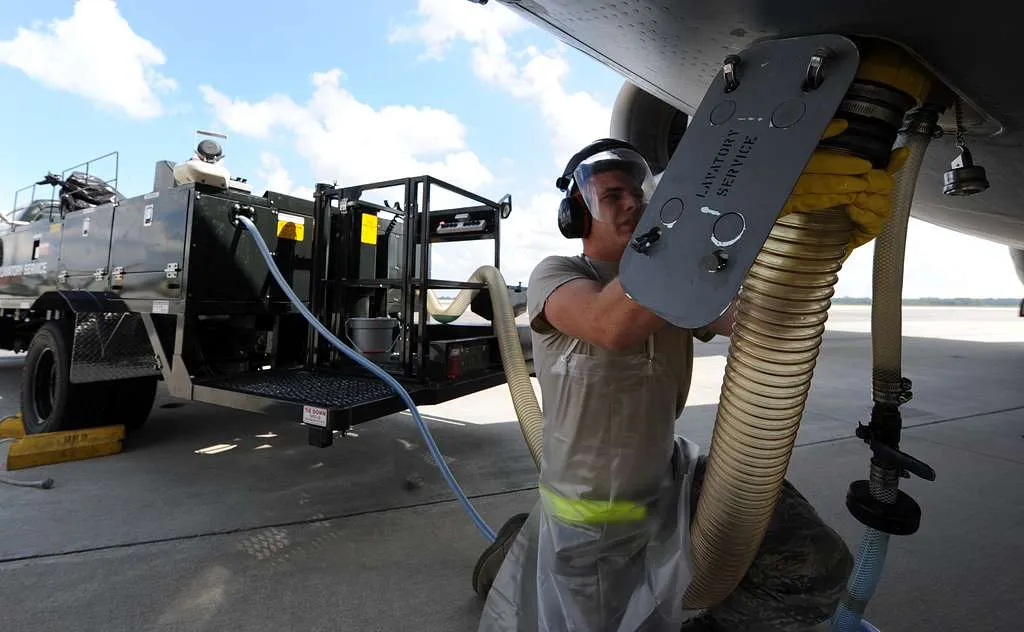 Отстойный шланг; Фото GetArchive
Отстойный шланг; Фото GetArchiveУниверсальный вызов
Проблема засорения туалетов не является уникальной для Air India или какой-либо конкретной авиакомпании — это проблема, с которой сталкиваются перевозчики по всему миру. Следовательно, авиационные инженеры продолжают изучать превентивные решения.
Решения
Потенциальный подход предполагает установка сетки в конце туалетной чаши Поймать более крупные предметы, позволяя отходам проходить. Однако это простое решение представляет свои проблемы.
«Сетка не позволит пластиковой бутылке или подгузнику пройти и заблокировать линию, но отходы пойдут», — отмечает Шарма. «Но это может создать и другие проблемы. Давление всасывания настолько высокое, что если слабый материал используется для сетки, он не будет длиться долго. И наоборот, если материал слишком прочный, сама унитаз может засориться. "
Преимуществом закупорки на уровне чаши является ее ограниченное воздействие: "Если тарелка для туалета блокируется, только этот конкретный туалет становится непригодным для использования. Они могут быть помечены как неработающие, в то время как другие продолжают нормально функционировать. "
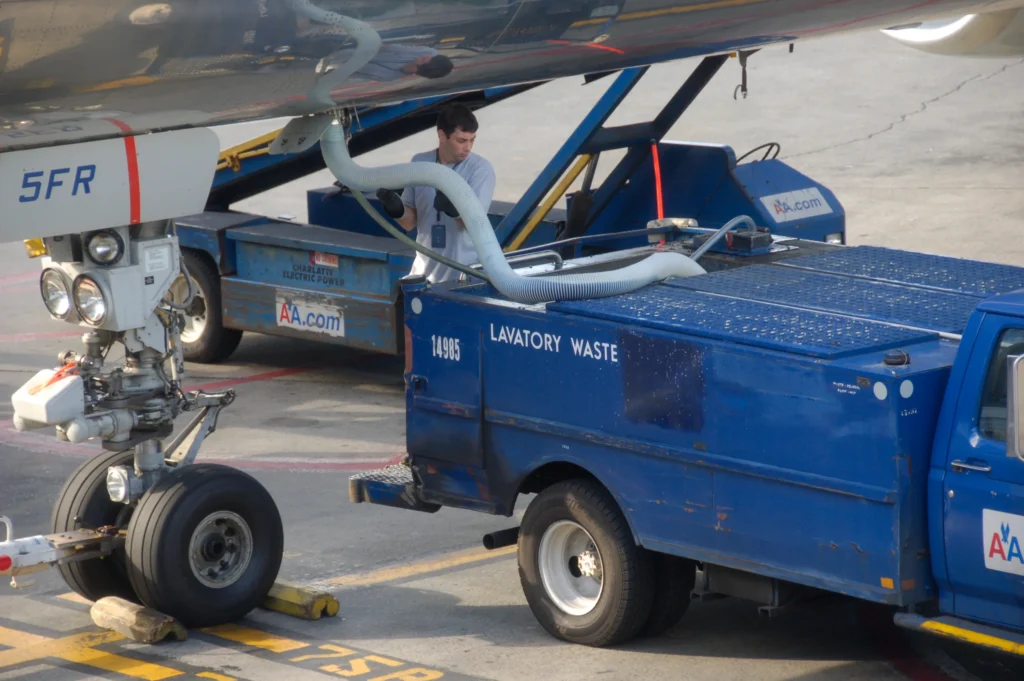 Фото: Эрик Ниу | Flickr
Фото: Эрик Ниу | FlickrТекущие инновации
Несмотря на десятилетия технологического прогресса в авиации, авиационный туалет остается областью со значительным пространством для улучшения. Инженеры продолжают изучать новые конструкции и материалы, которые могут противостоять уникальным проблемам управления воздушными отходами.
Некоторые новые модели самолетов имеют Совершенствование систем управления отходами с более широкими трубами и более сложными вакуумными механизмами.
Авиакомпании также регулярно обновляют свои объявления перед полетом, чтобы информировать пассажиров о правильном использовании туалетов.
Оставайтесь с нами. Следуйте за нами в социальных сетях для последних обновлений.
Присоединяйтесь к нам в Telegram Group для последних обновлений авиации. Следуйте за нами в Google News
Рейс Air India Toronto в Дели с 777-300ER перенаправили во Франкфурт
Почему туалеты самолетов забиваются во время полета? Впервые появился на Aviation A2Z.











